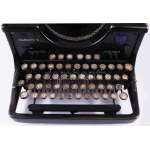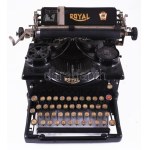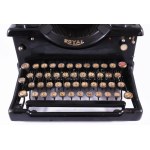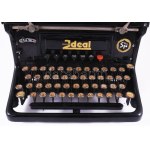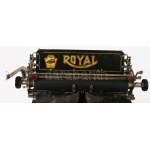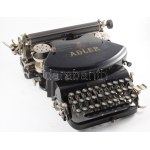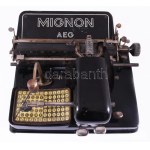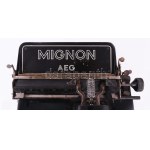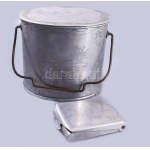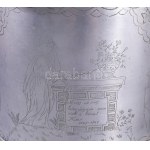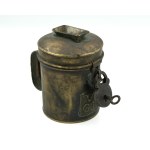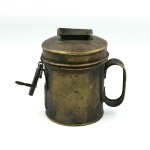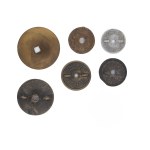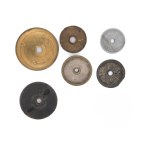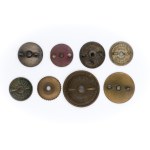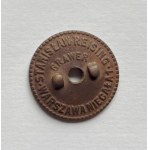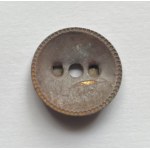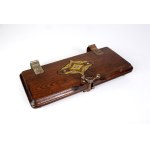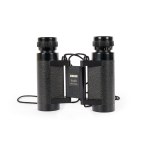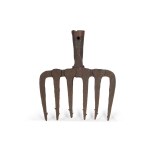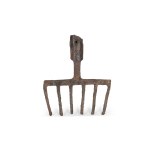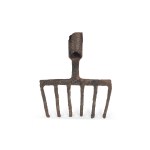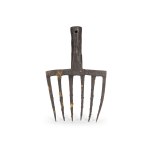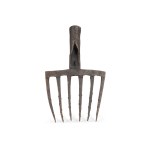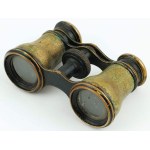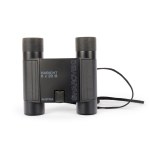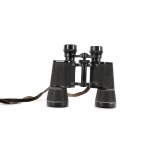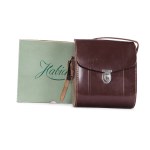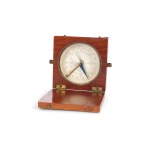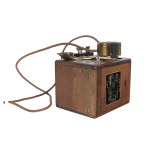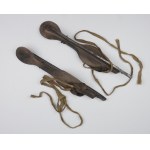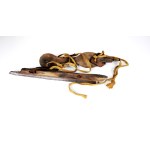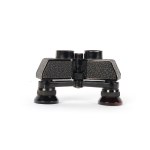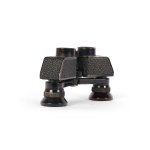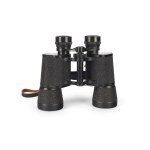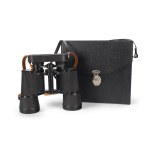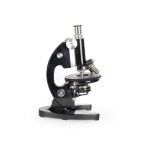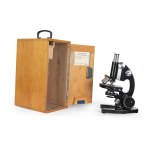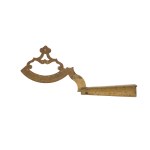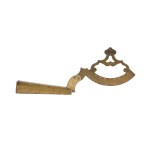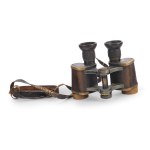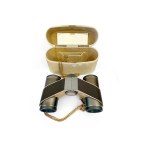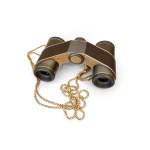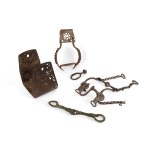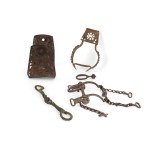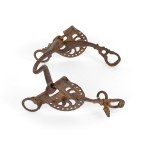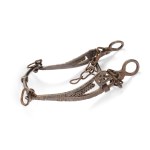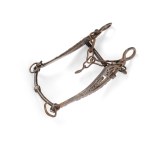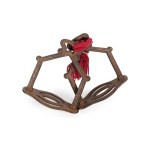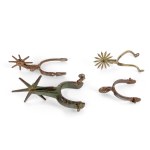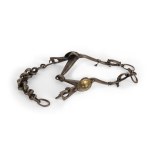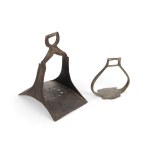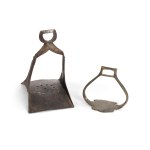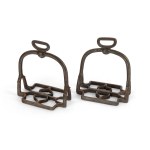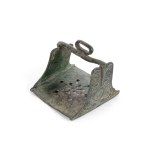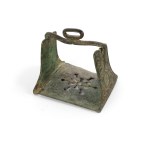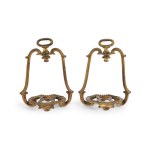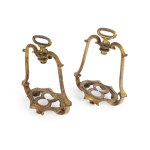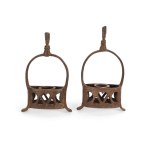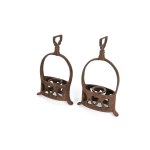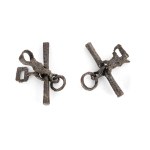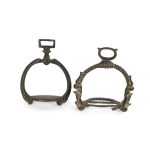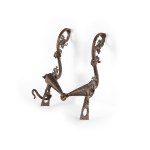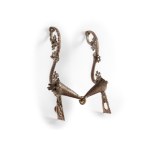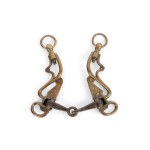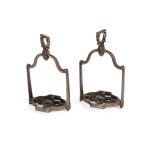Electric and Metalware auctions
1937-1940 Triumph "Standatrd 12" írógép, magyar billentyűzettel, eredeti fazettált üvegeivel, 36x26 cm /// 1937?1940 Triumph 'Standard 12' typewriter, with Hungarian keyboard, original faceted glass panels, 36×26 cm /// KIZÁRÓLAG SZEMÉLYES ÁTVÉTEL, NEM POSTÁZZUK! / ONLY PERSONAL COLLECTION AT OUR OFFICE!
cca 1914-1931 Royal Typewriter Company "Royal 10" írógép. Magyar billentyűzettel, oldalán eredeti fazettált üvegekkel, 40x39 cm /// cca 1914?1931 Royal Typewriter Company 'Royal 10' typewriter. With Hungarian keyboard, original faceted glass panels on the sides, 40×39 cm /// KIZÁRÓLAG SZEMÉLYES ÁTVÉTEL, NEM POSTÁZZUK! / ONLY PERSONAL COLLECTION AT OUR OFFICE!
cca 1920 Seidel & Naumann "Ideal" írógép, magyar billentyűzettel, 35x40 cm /// KIZÁRÓLAG SZEMÉLYES ÁTVÉTEL, NEM POSTÁZZUK! / ONLY PERSONAL COLLECTION AT OUR OFFICE!
1906-1914 Royal Typewriter Company Royal "Flatbed" írógép. Jó állapotban, 38x38 cm
cca 1910 Adler Mod. No7. írógép. Rajta "Adler Magyarországi Vezérképviselője John Rezső Budapesten" felirattal, cca 35x35 cm /// cca 1910 Adler Model No. 7 typewriter. With the inscription 'Adler?s Chief Representative in Hungary John Rezső in Budapest', approx. 35×35 cm
cca 1923 AEG Mignon tipusú mutatópálcás írógép magyar betűkkel. Az írógép-történelem rendkívül érdekes darabja, igazi ritkaság! /// Circa 1923 AEG Mignon pointer typewriter with Hungarian characters. A highly interesting piece of typewriter history, rarity!
1946/1947 Málenkij robot fogolymunka. Kijev környéke, 1946-1947, megmunkált alumínium csajka és cigarettatartó, rajtuk "H.K. Emlék Hadifogságomból" felirat mellett rendkívül gazdag díszítés, versrészlet, szerelmi témájú ábrázolás, növényi ornamentika, stb. /// 1946/1947 Malenkiy Robot forced labor. Around Kiev, 1946?1947, worked aluminum mess tin and cigarette case, bea...
Collection box / donation box. Przytulisko Weteranów Powstania Styczniowego 1863/4, Kraków/Lwów(?). Height 11.8cm, diameter 8.8cm. Made of brass, repoussed repoussed plaque W. 63/4 soldered on the front. Holder for holding. Lockable with iron padlock with key. Very good condition. Rarity!!!
Miscellaneous caps - 6 pieces. 1) Medaljernia A. Nagalski Warsaw Bielańska 16, diameter 18mm, 2) Fabr. Galanterji Metal. Galmet Sosnowiec, ¶ 17mm, 3) State Mint, ¶ 15mm, 4) Nut with illegible signature: MTX?, dia. 16mm, 5) Unsigned nut with square hole, dia. 25mm, 6) Unsigned nut, dia. 22mm. Good states.
Set of 8 nuts. 4 unsigned ¶ 18-22mm, 4 signed: 1) A. Nagalski, ¶ 25mm, 2) J. Knedler, ¶ 17mm, 3) J. Knedler, ¶ 19mm, 4) "Galmet", ¶ 16mm. Good states.
Late 19th century tie press . Tie press, wooden, inlaid on the lid, with metal elements, form. 24.5x12x5 cm. No data about the manufacturer. Minor abrasions, pressure screw and one hinge slightly corroded, otherwise good condition. Attached is a certificate confirming the origin of the object issued by Ewa Załęska, granddaughter of W. S. Reymont's youngest sister.
Brass, Bakelite, glass, leather Asking price 400 Estimate 500 - 600 inquire about the object
CompassDiameter 5.3 cmIn mahogany case, 7 x 7 cm, height 2.1 cmNot proved, no guaranteeDamaged, one locking ring missing
TelephoneFrance1930sManufacturer Association des Ouvriers en Instruments de PrecisionWooden housing, two sliding inspection flaps on the side, rotary crank, receiverBrass, original fabric-covered cablePlate with wiring diagram from the post officeApprox. 15 x 12.5 x 16.5 cmSigns of wear
Skates from the second half of the 19th century, on which the brothers Władysław and Franciszek Reymont skated as little boys on the pond near the mill in Wolbórka. Pair of skates, each measuring ca 31x6x3 cm. Metal skid attached to a wooden foot, preserved front leather fastenings and canvas straps (slightly later), no thong straps at the back of the foot. Skids slightly corroded, signs of...
MicroscopeReichert company, ViennaHeight 35 cm, width 16.5 cm, depth 23 cmIn original wooden box
Measuring deviceDated 1826BrassTotal length 24.5 cmParts missing
Opera glassesDiademCarl Zeiss, JenaIn original case with makeup mirror
Bundle: 4 pieces of saddle gear & stirrups16th-18th centuryIron & bronzeStirrup height 13 cm, width 11.5 cm
Horse bridle?17th/18th centuryForged ironLength 16 cm, width 13 cm
Horse bit17th/18th centuryForged ironLength 20 cm, width 12 cm
Pair of stirrups17th/18th centuryForged ironHeight 16 cm, width 14.5 cm
Bundle: 4 boot spurs17th/18th centuryIron & bronzeLargest spur length 22 cm, width 9 cm
Horse bridle17th/18th centuryIron, bronze fittingsLength 22 cm, width 18 cm
Two stirrupsOriental, Indo-Persian?17th/18th centuryIron & bronzeLarge stirrup Height 26 cm, length 21 cm
Pair of stirrups17th/18th centuryForged ironHeight 13.5 cm, width 11 cm
Stirrups17th/18th centuryCast bronzeHeight 12 cm, width 14 cm
Pair of stirrups17th/18th centuryGilt bronzeHeight 21 cm, width 15.5 cm
Pair of stirrups17th/18th centuryForged ironHeight 16 cm, width 10 cm
Parts of a horse bridle16th century or earlierForged iron, archaeological findLength 13 cm, height 12 cm
Two stirrups17th/18th centuryCast bronzeHeight 16.5 and 17 cm, width 14.5 and 13 cm
Horse bridle17th/18th centuryForged iron, openworkLength 24 cm, width 18 cm1 rosette missing
Horse bridle17th/18th centuryBronze & ironLength 21 cm, width 14 cm
Pair of stirrups17th centuryForged and decorated iron19.5 x 12 cm

